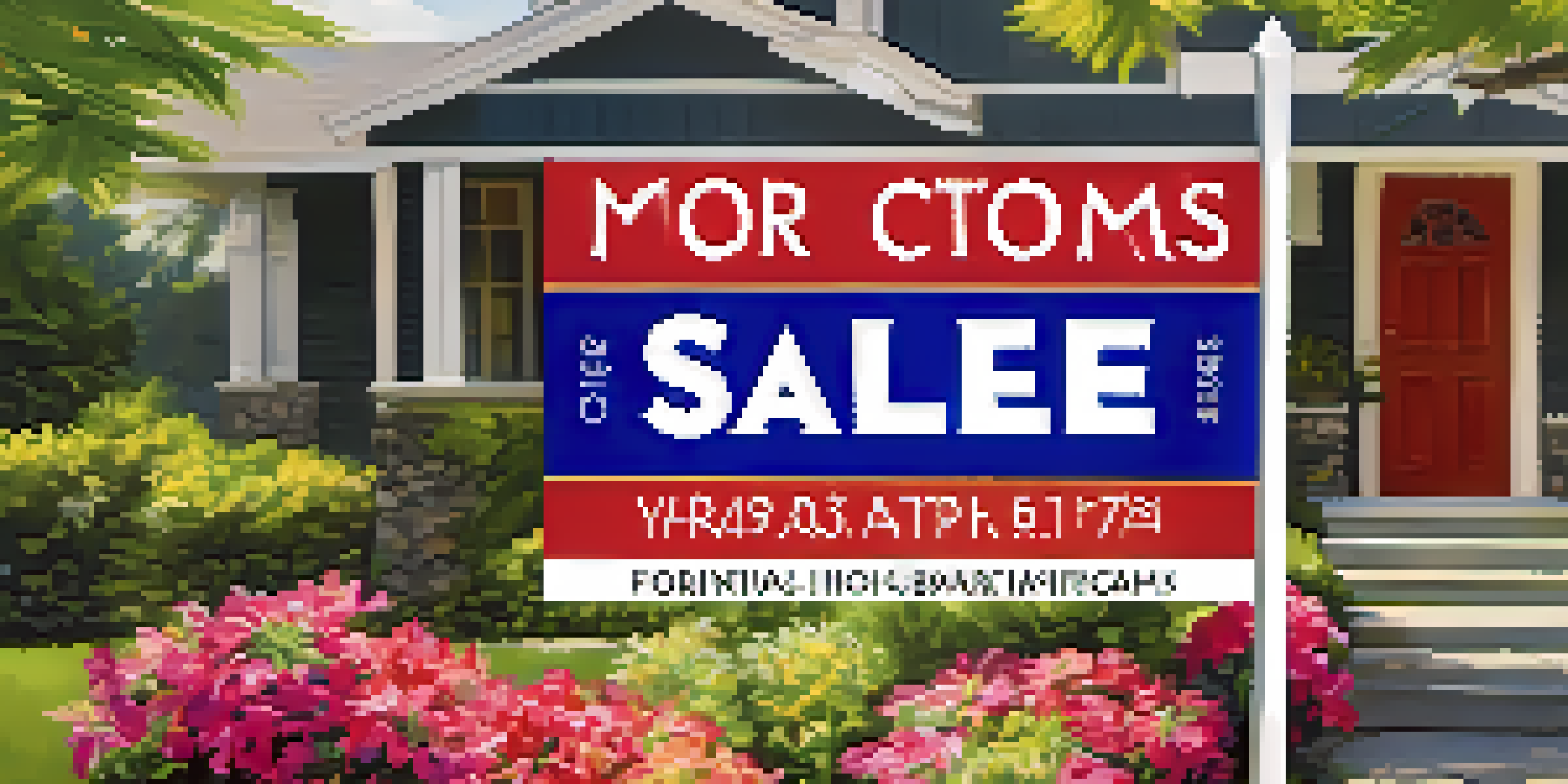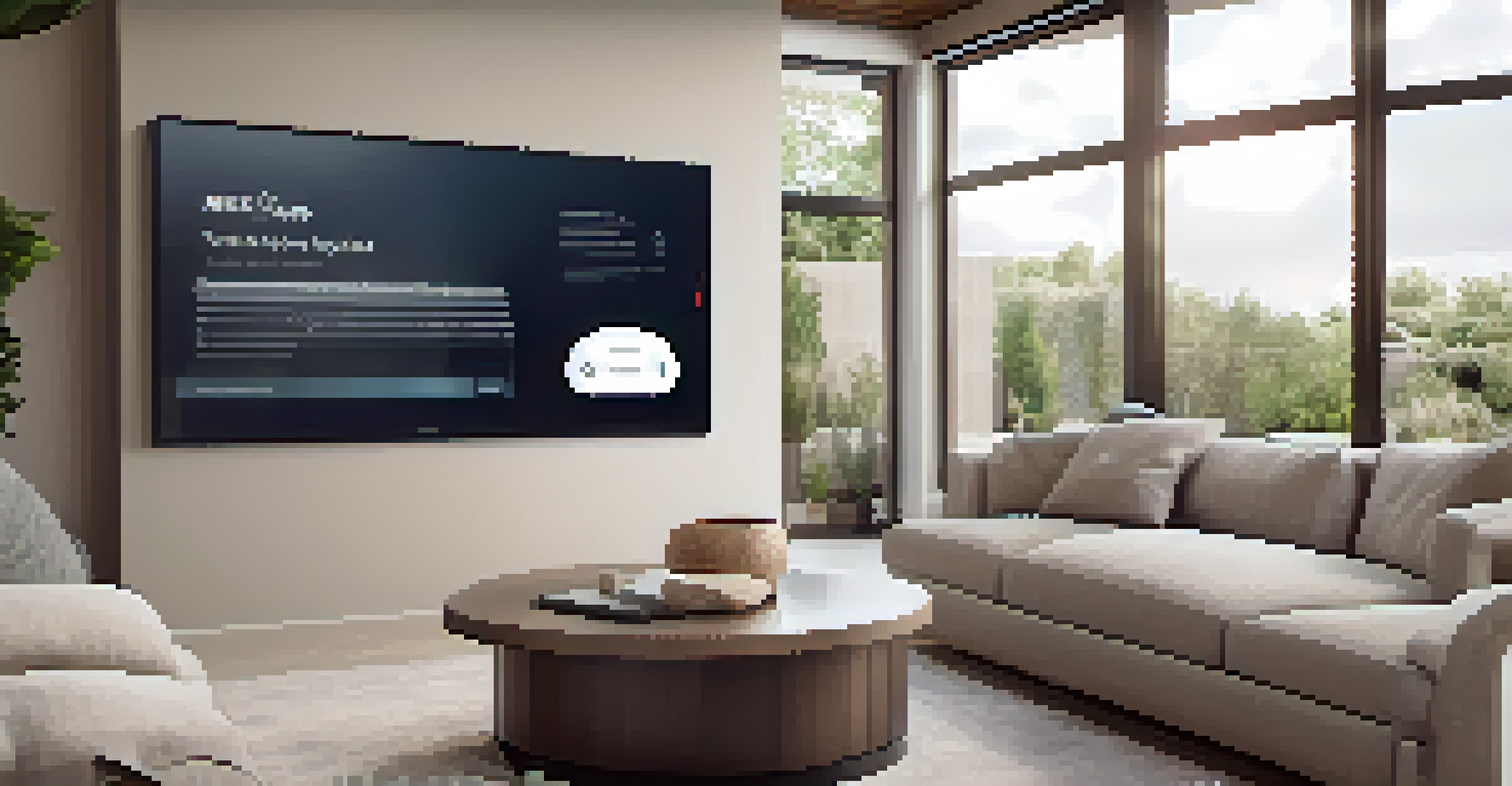How to Use Signage Effectively When Selling Your Home

Understanding the Importance of Signage in Home Sales
When selling your home, signage serves as a key marketing tool. It's your first chance to catch the eye of potential buyers, often before they even step foot on your property. An effective sign can convey essential information and create a memorable impression that prompts further interest.
Signage is a powerful tool for attracting attention and driving customer engagement.
Think of signage as a welcoming beacon, guiding prospective buyers to your home. Just like a well-placed lighthouse helps sailors navigate safely, clear and attractive signs can lead buyers to your front door. Quality signage can significantly enhance your visibility in a competitive market.
Moreover, effective signage can communicate professionalism and attention to detail. When buyers see a well-designed sign, it gives them confidence in the overall presentation of your home. This first impression can set the tone for their entire experience.
Choosing the Right Type of Signage for Your Home
Not all signs are created equal! Depending on your home’s location and the surrounding community, you might choose a yard sign, an open house sign, or even digital signage. Each type has its own advantages, and knowing which to use can make a big difference in your marketing strategy.

For instance, a yard sign is a classic choice that can attract passersby, while open house signs can guide visitors directly to your doorstep during showings. Digital signage, on the other hand, can reach a broader audience online, making it a valuable addition in today’s tech-driven world.
Ultimately, the right type of signage should align with your selling goals and the characteristics of your property. It’s essential to consider your target audience and how they typically discover homes for sale in your area.
Designing Eye-Catching and Informative Signs
A sign's design plays a pivotal role in its effectiveness. Use bold colors and clear fonts to ensure your sign is easily readable from a distance. Incorporating your home’s unique features into the design can also help it stand out in the neighborhood.
A well-designed sign is not just a marker; it's a beacon of opportunity.
Consider using high-quality images or graphics that reflect your home’s best attributes. For example, if you have a beautiful garden, showcasing it on the sign can intrigue potential buyers. Remember, your goal is to create a visual appeal that draws people in.
Additionally, don’t forget essential information like your contact details and any upcoming open house dates. A sign that is both attractive and informative can significantly increase the chances of capturing buyer interest.
Strategically Placing Your Signs for Maximum Impact
Placement is crucial when it comes to signage. Ideally, you want your signs to be visible from multiple angles and distances. Placing them at busy intersections or near popular community spots can increase visibility and attract more potential buyers.
Consider the layout of your property as well. The front yard is typically the best spot for a yard sign, while open house signs should lead visitors from the street to your door. Think of it as creating a path that guides buyers directly to your home.
Don't forget about local regulations regarding sign placement, as these can vary by neighborhood. Always ensure your signs are compliant with local laws to avoid fines and potential removal.
Utilizing Open House Signage Effectively
Open house signage is a fantastic way to draw visitors to your home. Use clear, inviting signs that indicate the time and date of the open house prominently. This signage can create a sense of urgency, encouraging potential buyers to visit sooner rather than later.
Consider using directional signs to guide visitors from main roads to your home. This not only helps them find your property but also creates a welcoming atmosphere as they approach. Remember, the easier you make it for buyers, the more likely they are to come through the door.
Additionally, consider placing informational flyers at the open house itself. These can provide details about the property and highlight its unique features, allowing visitors to leave with something tangible to remember your home by.
Leveraging Digital Signage in Real Estate Marketing
In today’s digital age, integrating digital signage can elevate your home selling strategy. Consider using social media platforms or online listing sites to showcase your property with virtual signs. This approach can reach a wider audience and attract tech-savvy buyers.
Digital signage allows you to update information in real time, making it easy to announce open houses or new price reductions. Think of it as a dynamic billboard that can adapt to your selling needs, ensuring potential buyers are always in the loop.
Additionally, consider using QR codes on physical signs that link to a virtual tour or additional property details. This modern touch can make your home more accessible and appealing to buyers who prefer to do their research online.
Maintaining Signage for a Professional Appearance
Keeping your signage in top condition is essential for making a good impression. Regularly check for wear and tear, ensuring that colors remain vibrant and text is legible. A faded or damaged sign can suggest neglect, which can deter potential buyers.
If you’re using multiple signs, consider a cohesive design that ties them all together. This professional touch not only enhances visibility but also reinforces your branding as a seller. Consistency can leave a lasting impression on buyers.

Finally, don’t underestimate the impact of cleanliness. Removing debris around your signs and ensuring the area is well-maintained can create a welcoming environment, helping to set the stage for a successful sale.
Tracking the Effectiveness of Your Signage
Once your signage is up, it’s important to monitor its effectiveness. Pay attention to the foot traffic and inquiries you receive, and ask visitors how they found out about your home. This feedback can provide valuable insights into what’s working and what might need adjustment.
Consider using unique identifiers, like a specific phone number or email tied to your signage, to track inquiries directly. This can help you gauge the effectiveness of different signs and placements, allowing you to optimize your strategy.
Remember, the goal of your signage is not just to attract attention but to convert that interest into serious inquiries. Continuously refining your signage approach based on feedback will enhance your home selling experience.